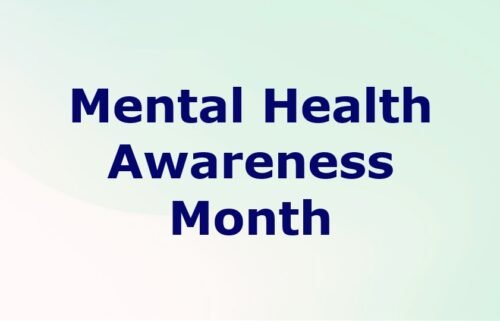This is what distance learning should look like in the fall

When Kim Reeder started teaching in Parker, Colorado, 14 years ago, she found that managing the classroom environment took way more time and energy than actually teaching kids, and she couldn’t reach as many of them as she wanted.
“I knew there were kids being left behind or not being pushed hard enough, because due to time constraints and class sizes, I had to teach the middle,” she said.
Then Reeder discovered virtual school. As a middle school social studies teacher at Colorado Connections Academy for the past 13 years, she found “there’s really no classroom management.” Online teaching at the academy, a public K through 12 school, gives her time, freedom and energy to “give every student what they need.”
Many schools around the world abruptly transitioned to distance learning in March, when Covid-19 forced brick-and-mortar schools to shutter. But much of what students experienced didn’t represent real online school, in which teachers are trained to teach remotely and online.
Online education done deliberately isn’t as simple as sending home packets or directing students toward which YouTube videos to watch.
And when done right, it’s just as rewarding as in-person teaching, said Eric Sheninger, a distance learning expert and associate partner with the International Center for Leadership in Education, which provides professional development services for educators. “It really is about using technology in meaningful ways that engage kids to think and apply their thinking in relevant ways.”
Online teaching requires a different set of skills, not just from teachers and school administrators, but from students and their families, too.
Equity is the most important, and most difficult, piece of the puzzle
Remote or distance education refers to learning outside of school, which doesn’t have to be online (think correspondence courses). Starting in the spring, most US students were trying to learn remotely and online, and that requires technology.
Yet some 18.1% of US households don’t have internet access, and over 10% don’t have a computer at home. Some families must park outside restaurants or Wi-Fi-enabled school buses to access signals. Others share a single device among multiple kids, which means only one child can “attend” school at a time.
“There are millions and millions of kids in this county who still don’t have access to Wi-Fi and technology,” Sheninger said.
Solving that problem requires creative thinking, budgeting and intervention at all levels of government and school.
“We have to deal with the digital equity issue. We’re sending a lot of work to unequal homes and unequal environments,” said Stephanie DeMichele, an Ohio-based digital learning designer and distance learning expert.
One suggestion: “It would be nice to see our wealthy districts collaborating with their rural, less wealthy neighbors: How can we help you and share resources?” DeMichele said.
Mary Gifford, president of StrongMind, a company which provides curriculum, technology and education services to grades K through 12 schools, said that teachers should start by considering the needs of the least-served students. “As a teacher, I should think of what I could do to serve the most vulnerable students, who have a harder time engaging.”
Rethinking and relearning the pedagogy
Prior to the pandemic, very few teachers received training in how to teach online.
“The more traditionally an educator has been teaching, the less likely they would have been to consider taking an online class,” DeMichele said; they wouldn’t have learned to teach one, or experienced one themselves.
Yet students have evolved in their technological mastery. “We are teaching teachers to teach students who no longer exist,” she said.
Engagement, and keeping kids motivated, looks different online. Many digital learning environments operate on a “flipped classroom” model. Students learn the material on their own first, remotely via videos or other technology, then come together with their teacher to work through it and seek help.
“When you’re in a traditional setting, the crowd management is a little different,” Tillie Elvrum, president of the Colorado Coalition of Cyberschool Families, said. “In an online setting, teachers are able to turn the blackboard over to a student.”
Material has to be adapted for different grades, not just matching the content to the age but the content delivery, based on technological aptitude.
Embrace the technology
Toney Jackson, a fourth-grade teacher at Nellie K. Parker School in Hackensack, New Jersey, realized quickly after school went online that he could lean into his existing skill set, including making videos.
“I needed to become my students’ favorite content creator,” he said. “I started thinking, ‘What have I done during the normal school year that got them excited and how can I use the same techniques and the same skills in new ways?”
In addition to making standard math instruction videos, he made some with math in action, using fractions as he cooked with his family — a favorite pastime.
“I show them how I’m using it,” he said. Using the program Flipgrid, his students made math videos of their own; posted videos of themselves asking questions; and answered their classmates’ questions in response.
“This was a way for them to help each other, even though we’re miles apart,” Jackson said. The technology and the format empowered his students to participate.
DeMichele encourages teachers to make use of the technology that kids already embrace: Let them demonstrate mastery of knowledge by being creative, making TikTok-style videos, Instagram stories or building worlds in Minecraft.
“We really need to shift our thinking from, ‘I need to have power over my students’ to empowering them to think on their own,” she said. “We need them to be more independent. Go meet them where they are.”
Kids can use all the technological tools at hand, from chats and email (that are secure and monitored), to small breakout groups in Zoom or other online video communications programs.
Personalization is prized
Most online schools offer curricula that can be personalized. “Teachers need to create lessons where kids can go at their own pace and follow their own paths,” Elvrum said. “The personalization is how you bring that curriculum to life.”
Reeder of Colorado Connections Academy has students whose parents have two weekdays off instead of weekends; the kids have that schedule, too. “Online school is not a one-size-fits-all approach,” she said. Students can participate in synchronous instruction or watch a video of it later. They can dial in for extra instruction during office hours but finish the work when they want: early in the morning or late at night.
If students are given a week’s worth of lessons, they can work ahead if they need to or linger in places where they need extra help, going at their own pace while still having their outcomes and progression monitored.
Alexandra Zeitz of Aurora, Colorado, has been enrolled at Colorado Preparatory Academy, an online school, since 2014. The 16-year-old just completed ninth grade, along with four college courses. “This works for me,” she said.
Balancing the amount of work
Many parents are anxious about their kids “keeping up.” That might be something we all have to reconsider right now. DeMichele suggested managing expectations, including of what parents expect of teachers, and what teachers expect of students.
“Whatever you think you can get done in a day or a class period, halve it and halve it again,” she said. “You can’t expect a kid to sit at a computer for seven hours a day.”
Sheninger noted that remote learning doesn’t involve heaping tons of digital work on students. Some assignments should be analog, and there should be a balance of synchronous and asynchronous learning, interrupted by time scheduled for socializing and physical movement.
A new level of family engagement
Many online schools suggest that children have a “learning coach” in addition to their teachers — most often a parent.
“They try to create a close-knit triangle so they can ensure the necessities that that student needs in order for them to be successful,” said Alexandra Zeitz’s mother, Emerald Zeitz. “You need to have a learning coach to keep kids accountable every day for showing up and doing schoolwork.”
This isn’t easy when most parents are working. Even if they’re not, they may not be in a position to act as a learning coach, because of language barriers or not understanding the material themselves.
Yet even if parents aren’t equipped to be teachers themselves, they may know best what style of learner their child is, how long she can focus or what stimulates her.
The one thing that each expert stressed was important: a schedule. Try making one, adhering to one and adjusting one as necessary.
Adding back the social piece
When the pandemic hit and schools closed, few kids interacted again for months. But online school doesn’t usually work that way.
“We provide clubs and activities for students, online and in person,” Elvrum said. “If they’re in a chess club or robotics, they may be participating in in-person tournaments, organized through the school.”
In non-pandemic times, Alexandra Zeitz’s school has field trips, dances and talent shows in the metro Denver area and throughout the state, and small groups of kids who live near each other may meet up in coffee shops for a study group.
The socializing, she said, “is more intentional. You have to reach out for your social activities.” This results in having fewer friends, she said, but they “are real, true friends.”
Emerald Zeitz likes the online model better than a traditional in-person school.
“You don’t have the negative socialization that a lot of kids have in the brick-and-mortar schools,” she said.
It’s also more sustainable during a pandemic, she said. Many students can still work online and in person in small groups. Brick-and-mortar schools can try to help families facilitate these in-person connections, which are key to kids’ social development and mental health.
Nobody says this switch has been easy to do, and it’s not what most teachers trained or signed up for. But experts say it’s possible if we learn to think differently about what school is and how it works. “Make learning collaborative,” DeMichele said. “We have as much to learn from our students as they do from us.”



